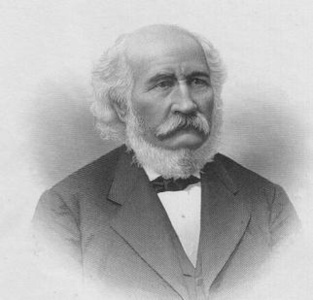Marsh, Capen, Lyon & Webb, Boston
Thomas H. Webb & Co., Boston
Thomas H. Webb was born in Providence. He graduated from Brown University in 1817 and subsequently completed a medical degree at Harvard in 1825. Webb died in 1866.
In 1830 Nahum Capen (1804-1886) joined Bela Marsh and Gardner P. Lyon to establish Marsh, Capen & Lyon (which succeeded Marsh & Lyon (1826-1829)). Later he was appointed the postmaster of Boston. Capen was an author in addition to being a book publisher. He was deeply involved with the local phrenological societies. He published the first volume of Edgar Allan Poe's works.
 |
Nahum Capen |
Dr. Webb joined the publishing house of Marsh, Capen & Lyon in 1839 which then became Marsh, Capen, Lyon and Webb. This firm was probably best known for its publication of "The Common School Journal". In 1839 and 1840 it published "The School Library”. This library consisted of the 12 volume "Juvenile Series" and the 25 volume "School Library for Older Children and Adults". Both sets were published under the sanction of the Massachusetts Board of Education. This firm became insolvent in late 1841. Thomas H. Webb & Co. succeeded the bankrupt firm.
After the bankruptcy Bela Marsh went out on his own, initially doing bookbinding between 1841 and 1843 and thereafter operated a bookselling and publishing business on Cornhill Street in Boston.
In 1842 Thomas H Webb & Co. published “The School Library”. Its plan was to have two series of fifty volumes each. The “Juvenile Series” was to be 18 mo. The second series had books that were for individuals older than 12 ("Advanced scholars and their parents"). In 1842 12 books in the juvenile series and 25 books in the "older than 12" series were published. It does not appear that either series ever had fifty volumes.
The "Primary Series", first published by Thomas H. Webb & Co. in 1843, consisted of fourteen Rollo books and six Lucy Series books, all authored by Jacob Abbott.
In 1845 the Thomas H. Webb & Co. publishers, (principals - T. H. Webb and H. Gray) announced the publication of three series. These consisted of a “Large Series” of books for adults and older children In addition it continued the publication of ”The Juvenile Series” and the “Primary Series”.